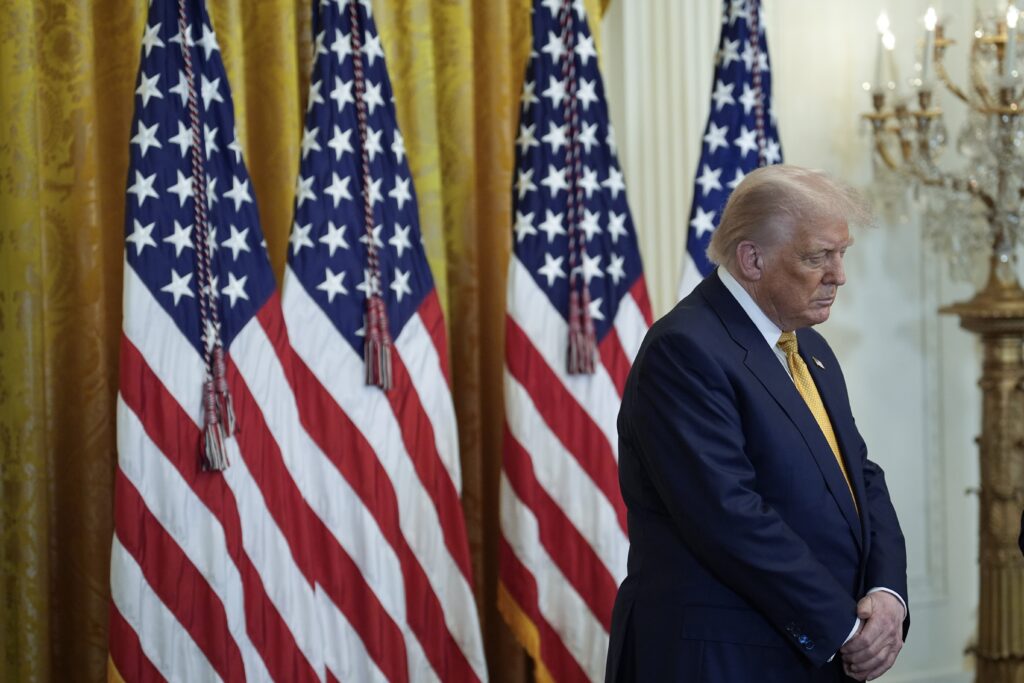BRUSSELS — As transatlantic trade tensions ratchet up, calls are growing on Brussels to get tough and ready its most powerful trade tool.
The European Union is under immense pressure ahead of U.S. President Donald Trump’s Aug. 1 deadline to clinch a deal or face tariffs of 30 percent. And while negotiators are frantically scrambling to convince Washington to agree to lower rates, appetite is growing to ready not one, but several counterstrikes.
Besides a first retaliation package set to hit €93 billion worth of U.S. goods in the absence of a deal, Brussels is already considering a new round of retaliatory measures against the U.S., which would also hit services. On top of that, it is now seriously weighing putting the Anti-Coercion Instrument on the table — also known as the EU’s “trade bazooka.”
POLITICO brings you up to speed on the famed-but-unused instrument:
What exactly is it?
The Anti-Coercion Instrument (ACI for acronym-lovers) is the gun the bloc can put on the negotiating table when it is being blackmailed by trade rivals. Its aim is mostly deterrence: The tool, which is not only a trade but also a foreign policy measure, seeks to prevent foreign powers from pressuring European countries — and envisages taking action as a last resort.
More specifically, it allows the EU to impose economic pain in such cases — from trade and investment restrictions to sanctions on intellectual property rights. Before wielding it, Brussels gives countries the opportunity to backtrack from their “coercive measures,” to broker an agreement based on international rules.
The European Commission defines economic coercion as a situation where a third country pushes the EU or one of its member countries to make a certain choice by applying — or threatening to apply — trade and investment measures. Coercion could take the form of trying to shape legislation or prevent it from being implemented by imposing additional import duties, for example.
Why does the EU have it?
A key component of the EU’s new trade defense armory and its strategy to become more assertive on the international stage, the instrument was first proposed at the end of 2021 and took effect two years later.
It was developed as EU member countries began to face increasing economic pressure, notably during Trump’s first presidency, when he sanctioned European firms involved in the construction of the Nord Stream 2 gas pipeline. In 2021, China cracked down on imports from Lithuania as well as on goods from other EU countries — such as France, Germany and Sweden — that included parts from Lithuania after Vilnius announced it would open a diplomatic office in Taiwan.
At the time, the EU had no adequate tool to respond. The ACI, however, eliminates the challenge of winning unanimous consent to implement trade restrictions. It’s the only tool the EU has that allows it to impose trade policy measures in response to economic coercion.
So how quickly can it be deployed?
A number of steps must be taken before the tool can be used — it’s the EU, after all.
First, following a request from an affected party (e.g. a company) or on its own initiative, the EU executive examines whether a case of economic coercion actually exists “as fast as possible” — normally within four months. If coercion is confirmed, the EU engages in diplomatic talks with the third country.

If those talks fail, the EU needs the support of a supermajority of its 27 member countries to launch countermeasures under the ACI. This so-called qualified majority requires the support of 15 countries representing 65 percent of the bloc’s population — meaning heavyweights such as Germany, France and Italy play a big role in determining the outcome.
Ultimately, just how quickly the EU can act depends on whether hesitant member countries can be convinced to back the measure — countries have a maximum of 10 weeks to support or reject it.
What can the EU target?
Brussels can impose or increase customs duties, restrict exports or imports through quotas or licenses, and impose restrictions on the trade in services.
It also can target the third country’s access to public procurement and foreign direct investment in the EU. Moreover, it can restrict intellectual property rights and access to the bloc’s financial markets.
Has the EU used it before?
Nope. But remember, the tool’s primary aim is deterrence.
But will it this time, like, for real?
I’m glad you asked!
The ACI is being floated again as the appetite for a fiery response to Trump grows. But the EU is also readying a list of countermeasures if negotiations fail. These measures — initially listed in two separate documents — are now being grouped into one list covering €93 billion worth of U.S. goods. The retaliatory tariffs will be put to member countries for approval, with the aim of having them ready to take effect by Aug. 7.
If there is no deal, that is.
This story has been updated.

